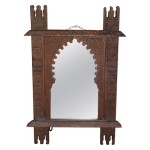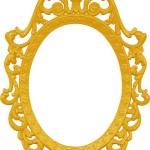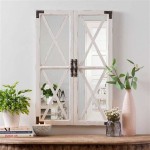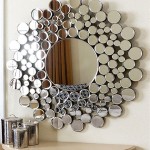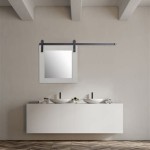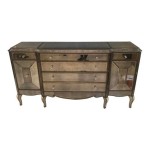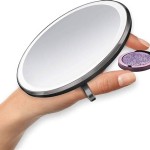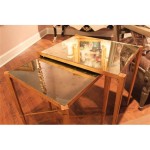Mirror Painting Designs: Exploring Artistic Expression on Reflective Surfaces
Mirror painting design involves applying artistic elements directly onto the surface of a mirror. This art form combines the reflective properties of the mirror with various painting techniques to create visually interesting and often unique decorative pieces. The designs can range from simple geometric patterns to complex landscapes and portraits, offering artists a versatile medium for creative expression.
The practice of painting on mirrors is not new. Historically, mirrors have been ornamented with gilded frames and decorative etchings. However, the application of paint directly onto the reflective surface adds a further dimension, allowing for a blending of the viewer's reflection with the painted imagery. This interaction between the real and the represented contributes to the distinct appeal of mirror painting designs.
The choice of materials and techniques significantly affects the outcome of a mirror painting design. Acrylic paints, oil paints, and specialized glass paints are commonly used, each offering particular characteristics in terms of opacity, drying time, and adhesion. The design itself can be applied using brushes, sponges, stencils, or even airbrushing equipment, depending on the desired effect and the artist's preference.
Choosing the Right Paint and Medium
Selecting the appropriate paint is crucial for the longevity and visual impact of a mirror painting design. Acrylic paints are often favored for their versatility, quick drying time, and water-based cleanup. They adhere well to the glass surface and offer a wide range of colors. However, acrylics may require multiple coats to achieve desired opacity and vibrancy.
Oil paints, known for their rich colors and blending capabilities, are another viable option. Oil paints provide a smooth, luminous finish and allow for extensive blending and layering. However, they require a longer drying time and mineral spirits or turpentine for cleaning. Proper ventilation is essential when working with oil paints due to the fumes emitted.
Glass paints are specifically formulated for use on glass surfaces. These paints are typically transparent or translucent, allowing light to pass through and enhancing the reflective qualities of the mirror. Glass paints are available in both water-based and solvent-based formulations, each with its own set of advantages and disadvantages. Solvent-based glass paints are generally more durable and resistant to scratching, while water-based options are easier to clean and less toxic.
Beyond the paint itself, the choice of medium or additive can also influence the final result. For example, using a flow improver can help to reduce brushstrokes and create a smoother finish, while a retarder can slow down the drying time of acrylic paints, allowing for more blending. Gels and pastes can be added to create texture and dimension on the mirror surface.
Techniques for Applying Mirror Painting Designs
Different techniques can be employed to apply paint to a mirror, each resulting in a distinct aesthetic. Brushing is the most common method, offering precise control over the application of paint. Different brush sizes and shapes can be used to create varying line weights and textures.
Sponging is a technique that involves dabbing paint onto the mirror surface with a sponge. This creates a textured, mottled effect that can be particularly effective for backgrounds or abstract designs. The type of sponge used will affect the final texture; sea sponges create a more organic, uneven look, while synthetic sponges produce a more uniform texture.
Stenciling involves using a cut-out template to apply paint to a specific area. This technique is ideal for creating repetitive patterns or intricate designs with clean, sharp edges. Stencils can be purchased pre-made or custom-cut from materials like acetate or mylar.
Airbrushing utilizes a specialized tool to spray a fine mist of paint onto the mirror. This technique is well-suited for creating smooth gradations, fine details, and realistic effects. Airbrushing requires practice and skill to master, but it can produce stunning results.
Reverse painting, also known as verre églomisé, is a technique where the design is painted on the back of the mirror in reverse order. The details are painted first, followed by the background. When viewed from the front, the design appears correctly oriented and protected by the glass surface. This technique dates back to ancient times and is often used for decorative panels and signage.
Incorporating Reflection into the Design
The most compelling aspect of mirror painting design is the inherent interaction between the painted elements and the reflected image. Artists can leverage this interaction to create depth, illusion, and a sense of dynamism.
One approach is to design the painting in a way that complements the reflected image. For example, a landscape painting could be placed on a mirror in a location that reflects a garden, creating a seamless extension of the natural environment. Similarly, a portrait painting could be positioned to reflect a window view, adding context and narrative to the artwork.
Another technique is to use the mirror's reflection to create optical illusions. By strategically placing painted elements, the artist can create the appearance of greater depth or manipulate the viewer's perception of space. This can be achieved through the use of perspective, symmetry, and trompe-l'oeil techniques.
The artist can also choose to obscure or distort the reflected image through the application of opaque paints or textured finishes. This can create a sense of mystery and intrigue, inviting the viewer to examine the artwork more closely. Alternatively, transparent or translucent paints can be used to create a subtle overlay on the reflected image, adding a layer of ethereal beauty.
The surrounding environment also plays a crucial role in how the mirror painting design is perceived. The lighting conditions, the colors of the surrounding walls, and the objects reflected in the mirror all contribute to the overall experience. Artists should consider these factors when designing their artwork and selecting the location for its display.
Exploring the interplay between the painted elements and the reflected image allows for the creation of truly unique and captivating artworks that engage the viewer on multiple levels. The reflective surface transforms the painting from a static image into a dynamic and ever-changing composition, reflecting the world around it and inviting contemplation.
In summary, mirror painting designs offer a dynamic and versatile art form that merges the visual appeal of painting with the unique properties of a reflective surface. By carefully considering the choice of materials, techniques, and the surrounding environment, artists can create stunning and thought-provoking works of art that capture the imagination.

Mirror Desighn Glass Painting Designs Etching Fancy Mirrors

Diy Painted Mirror Wallpaper Backgrounds Painting

Painting On Mirrors An Easy Step By Guide

Mirror Painting Painted Art Aesthetic

Incredible Mirror Glass Painting Designs Diy Handmade Ideas

Mirror Glass Art Etching Designs Painting Patterns

When Boring Catalogue Designs Don T Suffice Go For Diy Decoration Solutions Billy Com

Easy Diy Mirror Decor Ideas

Fusing Glass On The Mirror Tenderness Delphi Artist Gallery Painting Designs Ideas

12 Techniques To Painting Antique Mirrors Hallstrom Home

